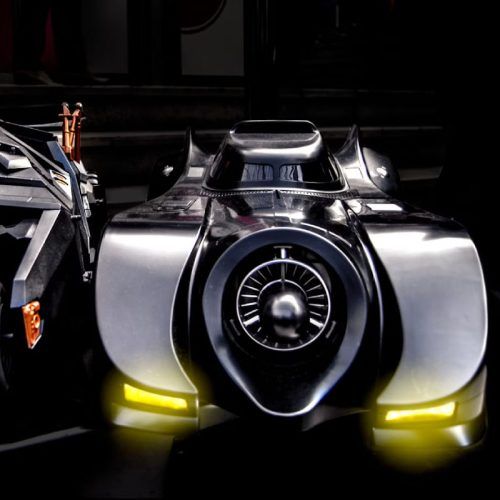Lewis Hamilton’s move to Scuderia Ferrari might be one of the biggest surprises we have witnessed in modern Formula 1 but the Fédération Internationale de l’Automobile (FIA) has bigger plans for 2026 and beyond. Formula 1 is gearing up for another tectonic change with new technical regulations due to arrive in 2026. For racing fans hooked to the sport, this could be another opportunity to see their favourite F1 stars giving them one hell of a show.
The new technical regulations in Formula 1 aim to make the racing more competitive and prevent the kind of domination that teams like Mercedes and Red Bull have had for over a decade. The FIA has introduced new engine and aero regulations that intend to infuse more sustainability into the sport while giving fans around the world a great spectacle.
To make this happen, the FIA has taken steps as drastic as eliminating the conventional Drag Reduction System (DRS) from the cars and relying more on electric assistance along with active aerodynamics to make the racing more competitive. Formula 1 has even taken care of the safety aspect for drivers and stressed the importance of sustainable fuel to help manufacturers trickle down bio-friendly F1 technologies to road cars.
The arrival of Audi and Honda on the scene as new engine suppliers is also likely to boost the on-track action with intense competition and innovation.
So gear up Formula 1 fans as we race towards a new era of open-seater racing. If you are eager to understand how the new technical regulations could affect on-track racing in 2026, grab a bucket of popcorn and join us for an electrifying ride through Formula 1’s new regulations for 2026 and beyond.

The Best Formula 1 Games You Must Play To Get A Lifelike F1 Experience

The Highest-Paid Formula 1 (F1) Drivers In 2024: Max Verstappen, Lewis Hamilton And More
Formula 1 new regulations for 2026: What are the core gains?
With the 2026 regulations, the FIA is going for the ‘nimble car’ concept that stays true to the philosophy of Formula 1 racing. Compared to the 2024 and 2025 regulation cars, the 2026 F1 cars will be substantially lighter and feature more powerful engines with a reduced carbon footprint. The agile chassis should also make overtaking a common occurrence on the track, something which the modern-day F1 cars struggle with. The governing body also hopes to see more competitive racing that involves driver skills as a key aspect rather than the cars doing the trick.
Let’s begin with the new engine regulations, which are substantial for the 2026 cars.
F1 2026 engine regulations
– The 1.6-litre turbocharged V6, which is already lauded for its efficiency, will now rely more on electric assistance for its power gains. The engine’s power drops from 560kW to 400kW whereas the electrical components now produce 350kW of power, up from the previous 120kW.
– The 2026 cars will have higher energy recovery systems. The FIA says that the new cars can recover up to 8.5 megajoules per lap from braking. That’s twice the number of what the 2024 cars are capable of recovering.
– Drivers can choose how to better utilise the extra energy generated per lap with variable energy harvesting strategies.

– The F1 2026 cars will feature a new manual override system that acts as a replacement for the outgoing DRS system. The leading car’s energy deployment will taper off above speeds of 290 kph and will be zero at 355 kph. For the ones following though, it will be a different story. As long as the driver is within one second of the car ahead, the MGU-K Override mode now provides the full 350kW electrical power up to speeds of 337kph. This, along with the aero drafting, should encourage overtakes. Think of it as an electrical boost to aid overtaking.
– The new engines will now run on 100 per cent sustainable fuel which will be derived from non-food sources, municipal waste and out of the atmosphere.
– Lastly, the 2026 regulations will also see Audi and Honda join as new engine suppliers alongside Ferrari, Mercedes AMG, Renault and Red Bull Ford Powertrains.
F1 2026 aerodynamic and chassis regulations
– The 2026 F1 car will be smaller. The regulations dictate the cars’ wheelbase to be shrunk by 200mm, the width by 100mm and the floorboard by 150mm.
– The weight has been reduced by 30 kgs, thereby having a significant impact on the car’s agility. The 2026 car should now weigh 768 kgs.
– In terms of aerodynamics, the new Formula 1 2026 car oversees a reduction in downforce by 30 per cent and drag by 55 per cent. Hence, drivers will now witness better handling with superior fuel efficiency. The FIA says that these aero tweaks should make the cars more raceable.
Does that mean we get to see Hamilton and Alonso putting their elbows out around Suzuka, Japan? We say bring it on!

– The new active aero brings movable front and rear wings! The standard Z-mode aero will open the elements on the front and rear wings to allow for greater cornering speeds. The X-mode will be a low-drag configuration that changes the flap angle on both wings for better straight-line speeds. The X-Mode will be activated in parts of the track where a lower downforce setup is safe. Think of this as an advanced version of the older DRS system that relies solely on the rear wing’s flap.
– The FIA has also changed the tyres! While the 18-inch wheels still remain, the tyres will be narrower by 25mm on the front and 30mm on the rear. This will reduce approximately 5 kgs of rubber per set of four tyres while offering minimum loss in grip.
– The 2026 F1 car will also lose the front wheel arches and get mandated wheel bodywork to achieve optimal wake performance. The new in-washing wheel wake control boards in front of the sidepods will also reduce the wheel wake. In theory, this should allow the cars to race closer to each other.
– The partial flat floor and lower-powered diffuser should reduce the ground effect and lower the need for a stiff and low suspension setup. This should also solve the bouncing and porpoising issue that F1 cars have had since the 2022 season.
– The safety structure has also been revised to keep the driver safe in the case of an accident. New lateral safety lights will be mandated to identify the Energy Recovery System (ERS) status of the car in case it stops on the track.
2026 F1 teams confirmed so far

The Formula 1 new regulations for 2026 have been approved by the following teams and their engine manufacturers:
– Red Bull Racing with Red Bull Ford Powertrains engine.
– Racing Bulls Formula 1 with Red Bull Ford Powertrains engine.
– Scuderia Ferrari with Ferrari engine.
– McLaren F1 Team with Mercedes-Benz engine.
– Mercedes-AMG Petronas F1 Team with Mercedes Benz engine.
– Alpine F1 Team with Renault engine.
– Aston Martin Aramco F1 Team with Honda engine.
– Audi F1 team with Audi engine.
– Hass F1 Team with Ferrari engine.
– Williams Racing F1 team with Mercedes Benz engine.

‘Ford v Ferrari’ And Other Best Auto-Racing Movies To Fuel Your Need For Speed

11 Best Car Games That Will Set Your Heart Racing: ‘Gran Turismo 7’, ‘Wreckfest’ And More
(Hero and Featured Image Credits: Courtesy FIA)
Frequently Asked Questions (FAQs)
– What are the new changes in Formula 1 regulations in 2026?
The Formula 1 regulations in 2026 will bring a nimble and agile car that relies on sustainable fuel and greater aerodynamics.
– Will there be DRS in Formula 1 regulations 2026?
No, DRS has been removed from the Formula 1 regulations in 2026. Instead, the new X-Mode, as part of the active aero system, will offer similar effects in tandem with the MGU-K Override mode.
– What will be the engine regulations for Formula 1 in 2026?
The Formula 1 engine regulations in 2026 will see the 1.6-litre turbocharged V6 engine rely more on electrical power, run on totally sustainable fuel and focus on greater energy recovery from braking.













